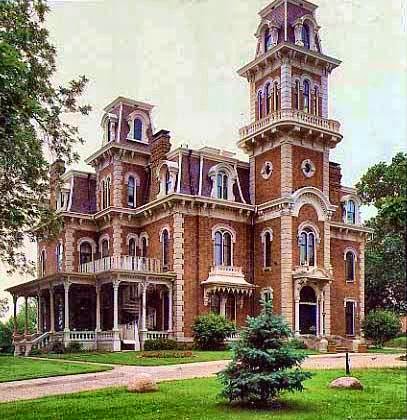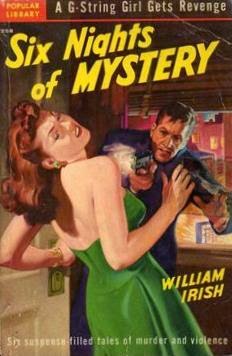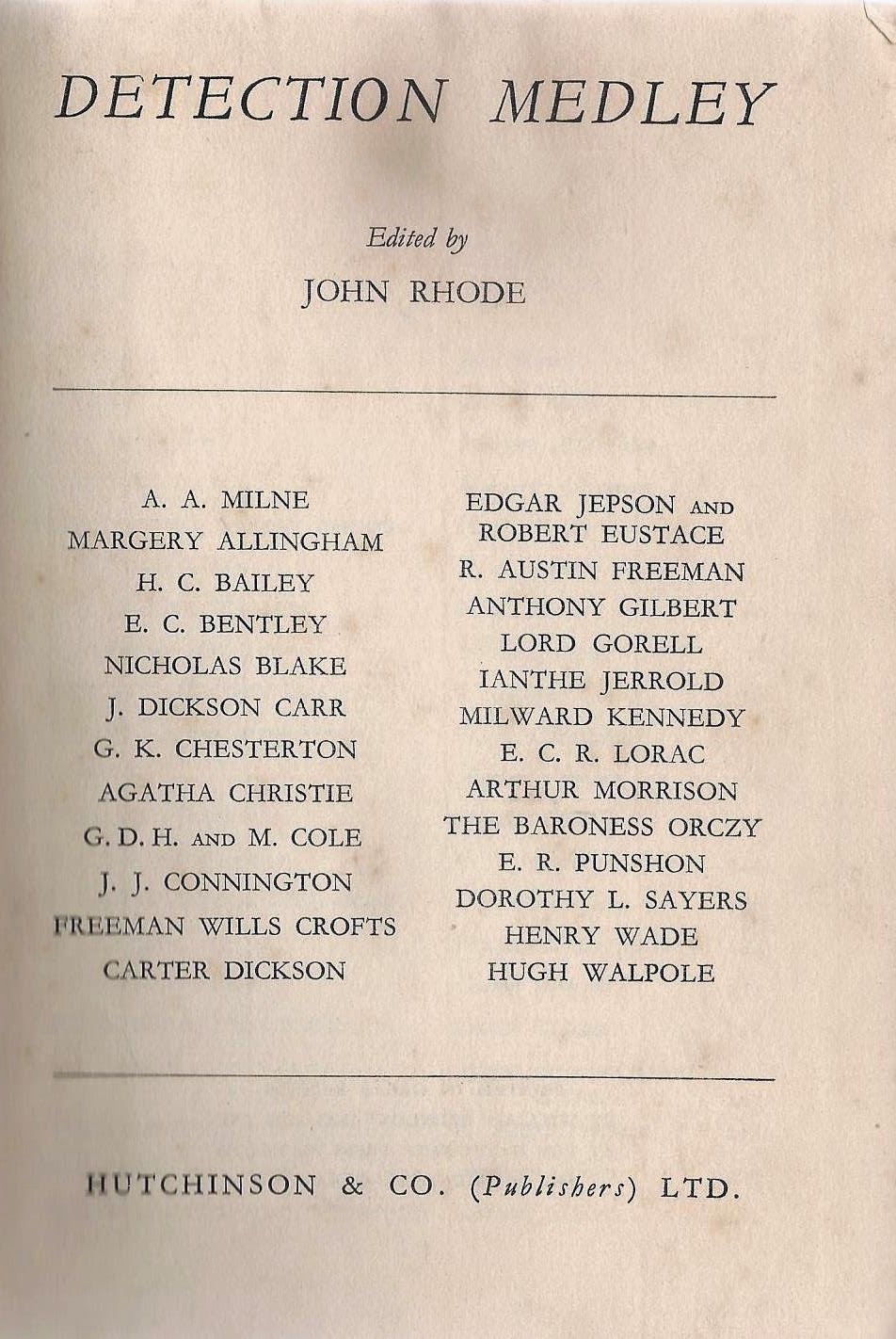--from the front jacket flap of The Case of The Dowager's Etchings (Doubleday Doran, 1944)
River Rest was a JUNGLE--And he would be king of this jungle. He moved down the carpeted hall, his animal senses alert and quivering....Only an old woman stood between him and his dream of wealth....Without realizing it, Carrie Giles had become a stranger in her own home. Four roomers had moved in. Three were cold-eyed men. The fourth was a predatory female whose every word and gesture was a wanton invitation. All four were interested in Carrie's etchings. But she never knew why--until a silent killer walked into her room!--from the back cover of Never Walk Alone (formerly The Case of the Dowager's Etchings) (Popular Library, 1951)
 |
| Going stag: the hardcover edition |
This remarkable publishing alchemy is a process that academia now metaphorically designates "pulping," i.e., making books more available to readers as cheap paperbacks with vivid, sexualized covers--often adapted by artists from original pulps art--guaranteed to catch the eye, titillating many, while outraging others (in the 1950s Congressional pressure would encourage publishers to tone down the covers).
In 1944, The Case of the Dowager's Etchings was published by that great warhorse of American crime fiction publishing, Doubleday Doran's Crime Club. By this time the Crime Club had a visual categorization system with an array of symbols meant to immediately signify to Crime Club members and potential buyers what kind of mystery they were getting with each title. The Case of the Dowager's Etchings was denoted with a clutching hand, signifying "character and atmosphere."
 |
| Rufus King in the 1930s |
The Case of the Dowager's Etchings is a fine example of suspense fiction, but where Museum Piece No. 13 is predominantly Gothic and gloomy, Etchings conforms much more to the novel of manners style most associated today with the British Crime Queens Dorothy L. Sayers, Margery Allingham and Ngaio Marsh, with some good character studies, witty writing and minute social observation.
The protagonist of Etchings, the blue-blooded Carrie Giles (Mrs. Carter Giles), is a skillfully-delineated character, one of a long line of memorable wealthy matrons in Rufus King's fiction. King, who grew up in New York City in privileged circumstances--prep school and Yale; summers in Rouses Point, a town at the northern tip of Lake Champlain just below Canada; winters in Florida) no doubt knew such people well (I suspect he drew partly on his own mother).
Although it is unquestionably a slighter novel, Etchings reminds me to some degree of Elisabeth Sanxay Holding's brilliant crime novel The Blank Wall, which it preceded by three years. Holding's novel, also set during the Second World war, offers a fascinating look at social changes wrought by the conflict, particularly in the roles of women, including, in the case of the protagonist of that novel, wealthy, sheltered white matrons.
King skillfully navigates this same process of personal growth with Carrie Giles, who feels, in an increasingly democratic age, obsolete and resented by the local hoi polloi, some of whom make their feelings vocal when they see her being driven about town, to their disgust, in a Victorian carriage, pulled by a "roached black mare" (Mrs. Giles brought out the carriage again because of wartime gasoline rationing).
 |
| Rooms to let: all just as Papa left it |
Mrs. Giles does some investigating in her own right and King offers readers one splendid clue, so there is genuine detective interest in Etchings, but I think readers may enjoy the novel most, like I did, for its "manners."
One of my favorite aspects of the novel is how King has Mrs. Giles, a woman in her seventies, constantly reflecting on the things her Papa did or said. It seems like practically everything in the mansion, River Rest, was purchased by Papa or chosen by Papa. It's a wonderful portrait of a masterful Victorian father, sublimely confident even when utterly mistaken and though long dead still a great influence on his daughter (however there are signs his grip finally may be slackening).
In its blurb the hardcover edition of Etchings doesn't mention, oddly, the Victorian-era etching, a pastoral scene with stag done by Mrs. Giles, that figures significantly in the plot, though it is depicted in the somewhat stodgy front cover illustration. On the whole, however, the plot description details the novel's doings dutifully, if a bit dully.
 |
| Cinematic: ready for their closeups |
In the novel there also is a sexy, brassy woman factory worker (Rosie the Ravisher one might say, or, as the back cover blurb rather overheatedly puts it, "the predatory female whose every word and gesture was a wanton invitation"). I assume this is meant to be the woman on the cover who resembles Rita Hayworth (it's certainly not Mrs. Giles).
The problem is this scene never quite occurs in the book! Nor does the new title seem very particular to the novel. Perhaps it's meant to reflect how Mrs. Giles has to rely, amid great danger, on her own devices in the crisis she faces, with her beloved grandson frequently sidelined? Was the publisher drawing on "You'll Never Walk Alone," the Rodgers and Hammerstein hit from Carousel (1945)? (The song is vastly more familiar to my British readers, I suspect, in this version by Gerry and the Pacemakers.)
Don't let any misleading cover art or blurbs spoil your enjoyment of the actual text of the book. The Case of the Dowager's Etchings is another great novel from an American Golden Age Crime King, whatever one puts on its covers.
Other Rufus King novels reviewed at The Passing Tramp:
Maneaters: Murder by Latitude (1930)
Tempests: Murder on the Yacht (1932)
Reefs: The Lesser Antilles Case (1934)
Good news too for fans: All the Rufus king novels are being reprinted, by Wildside Press. I wish I could say I has something to do with it (I had been trying for years), but at least it's finally happening.

.jpg)












































